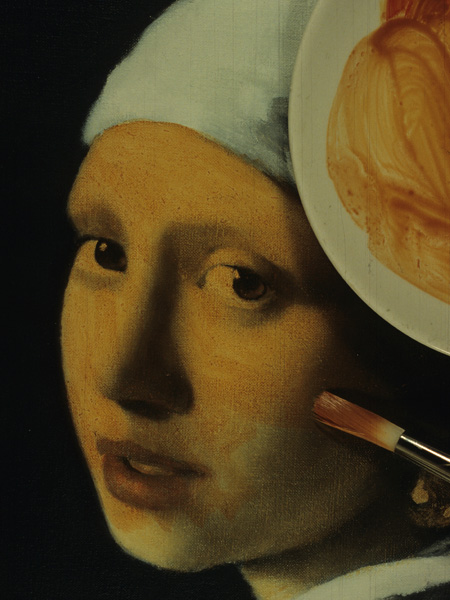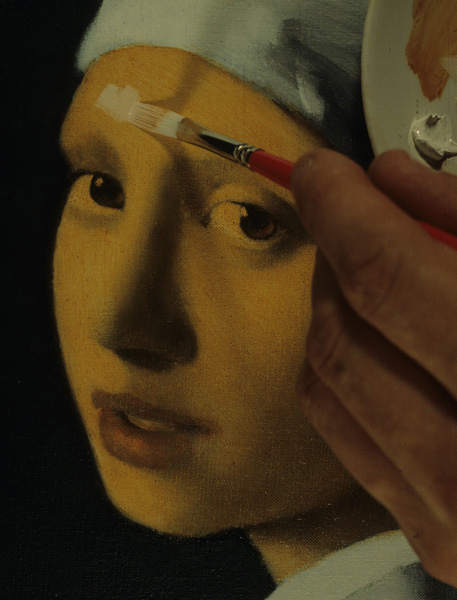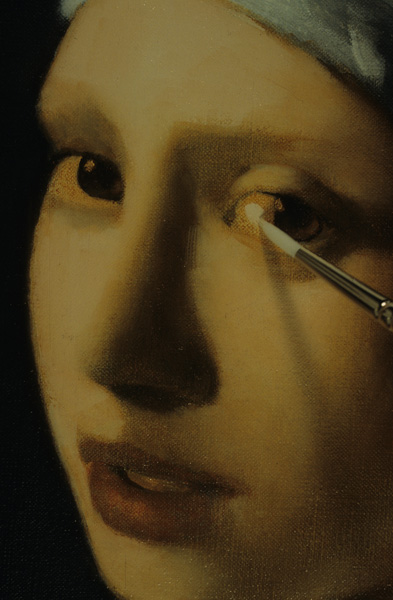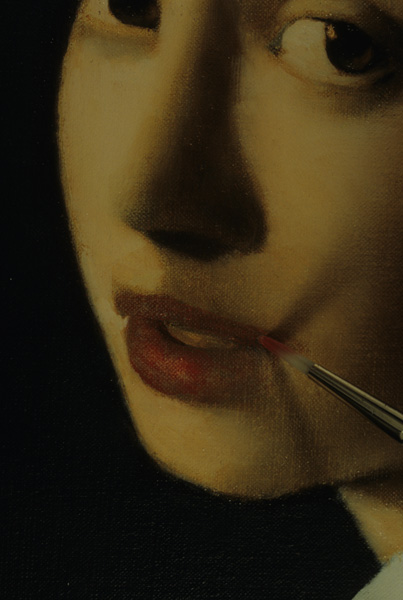|
PAGE 4:
Painting a Copy of Jan Vermeer's "Girl with a Pearl Earring"
Using Oil
Glazing Technique and a Grisaille (Monochromatic Gray) Underpainting
|
|
|
|
In this image,
the second glaze layer is being applied over the dried first glaze. This
glaze is also composed of cadmium red medium and yellow ochre. I am making
this layer a bit more strongly colored than the first glaze by diluting
it with less of the glazing medium. It is beginning to impart more color
to the shadowed areas of the nose, and cheek (the chin and neck have not
been covered yet, and still show the color achieved by the first glaze
that was applied in the prior steps). |
|
|
Again, the light areas must
be brought back out by working white paint into the glaze. The aspect of
traditional glazing recipes that is unique is the manner in which their
natural, resinous ingredients continue to accept paint even as the glaze
is tacking up and drying. Paint applied to this partially drying glaze forms
the basis of the "scumbling" technique used in Northern Europe
during this time. Even as the glaze is tacking up, paint that is thinly
applied in a dry brush technque tends to melt off of the paint brush and
absorb into the sticky glaze. Modern synthetic glazing mediums do not have
this quality, and in my opinion they should be avoided. |
|
|
This image shows the white
paint being blended into the glaze layer. The lightest area is to the
left side of the forehead, with this lightness feathering out into the
slightly darker side of the forehead on the right. |
|
|
This image shows how the light
areas have been brought up to a rather high key, bright state. It is best
to err a bit on the bright side when it comes to emphasizing the highlights,
in order for subsequent glazes to not obscure the brightness of these highlighted
areas. The sense of brightness can always be reduced later, by glazing accordingly,
but if you lose the sense of brightness early on, it is quite hard, if not
impossible, to bring it back. |
|
|
A little of the brightness of
the whites of the eyes is also being brought back out by painting into the
wet glaze. |
|
|
The white paint applications
have been smoothed out a bit in this image, and a second glaze of red
is also added to the lips. |
|
|
|
|






